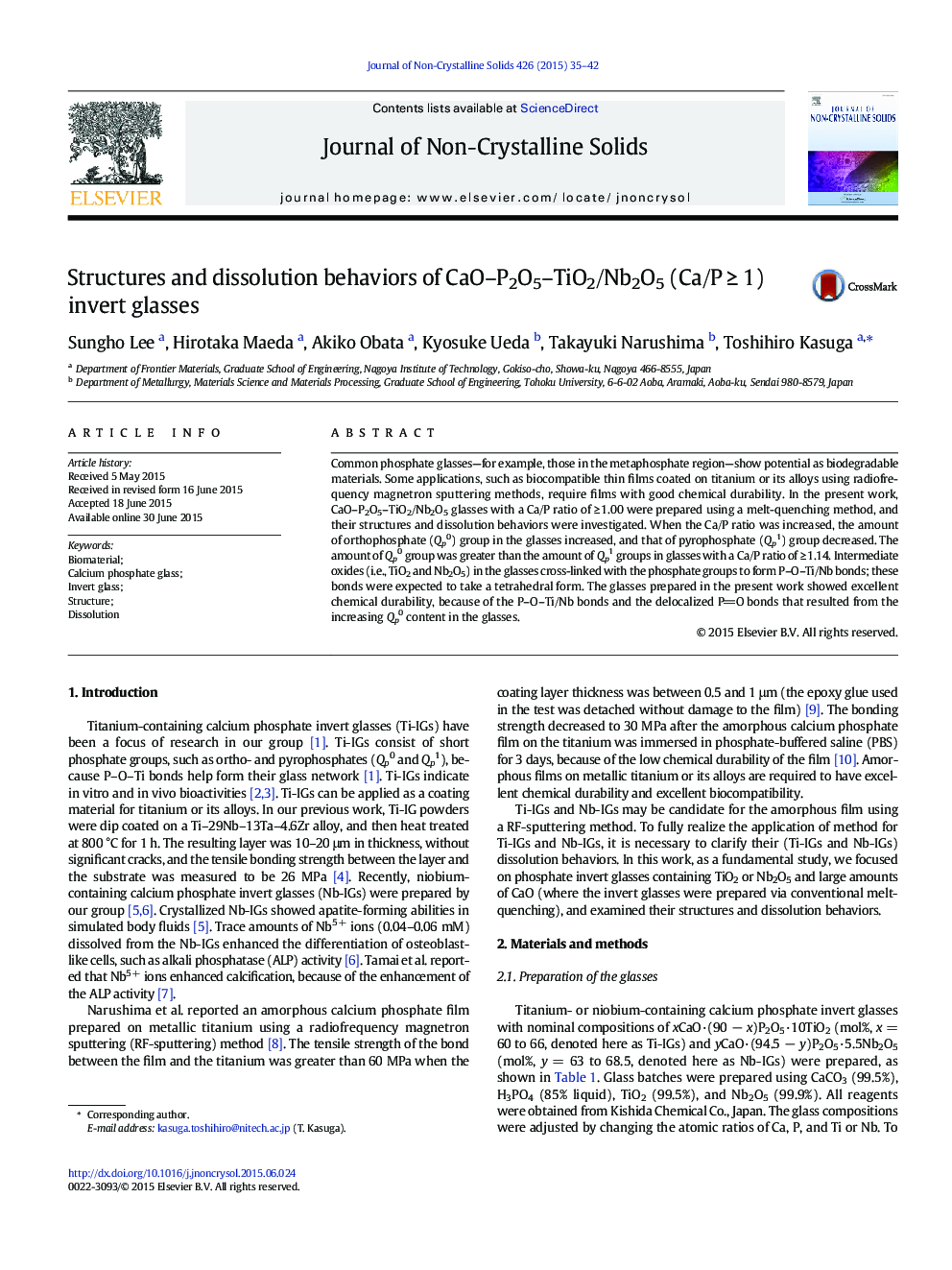| Article ID | Journal | Published Year | Pages | File Type |
|---|---|---|---|---|
| 1480589 | Journal of Non-Crystalline Solids | 2015 | 8 Pages |
•Phosphate glasses including numerous orthophosphate groups (Qp0) were prepared.•The number of P–O–Ti/Nb bonds increased with increasing Qp0 content in the glasses.•TiOx/NbOy groups formed tetrahedrons in the glasses including numerous Qp0 groups.•The chemical durability increased with increasing Qp0 content in the glasses.
Common phosphate glasses—for example, those in the metaphosphate region—show potential as biodegradable materials. Some applications, such as biocompatible thin films coated on titanium or its alloys using radiofrequency magnetron sputtering methods, require films with good chemical durability. In the present work, CaO–P2O5–TiO2/Nb2O5 glasses with a Ca/P ratio of ≥ 1.00 were prepared using a melt-quenching method, and their structures and dissolution behaviors were investigated. When the Ca/P ratio was increased, the amount of orthophosphate (Qp0) group in the glasses increased, and that of pyrophosphate (Qp1) group decreased. The amount of Qp0 group was greater than the amount of Qp1 groups in glasses with a Ca/P ratio of ≥ 1.14. Intermediate oxides (i.e., TiO2 and Nb2O5) in the glasses cross-linked with the phosphate groups to form P–O–Ti/Nb bonds; these bonds were expected to take a tetrahedral form. The glasses prepared in the present work showed excellent chemical durability, because of the P–O–Ti/Nb bonds and the delocalized PO bonds that resulted from the increasing Qp0 content in the glasses.
